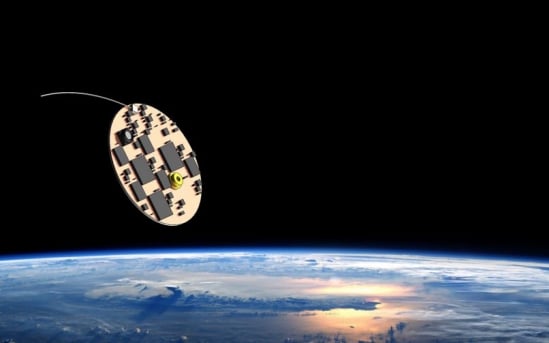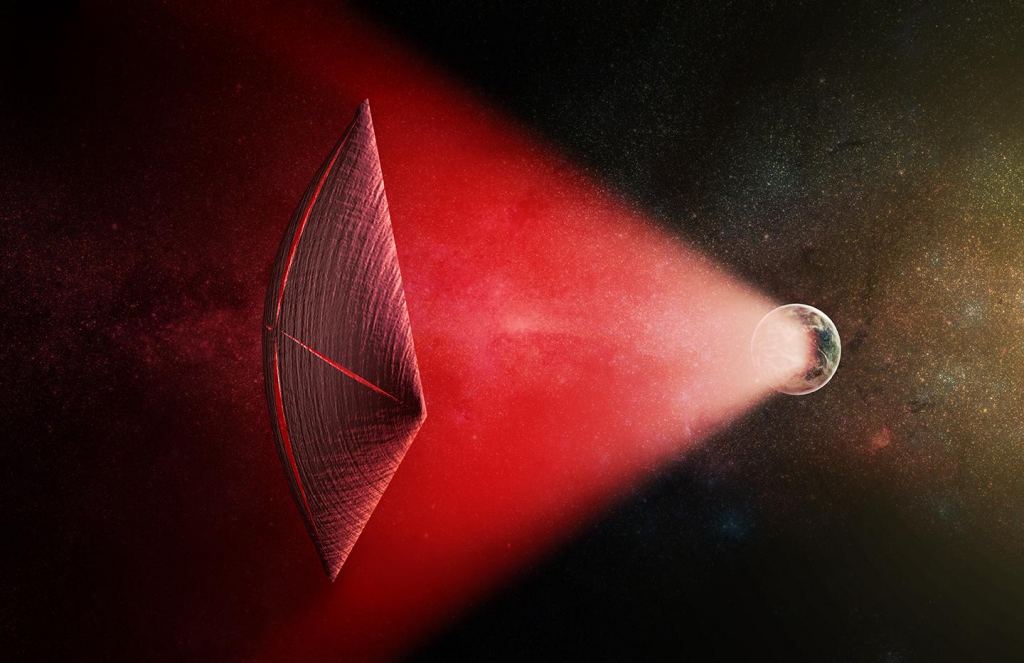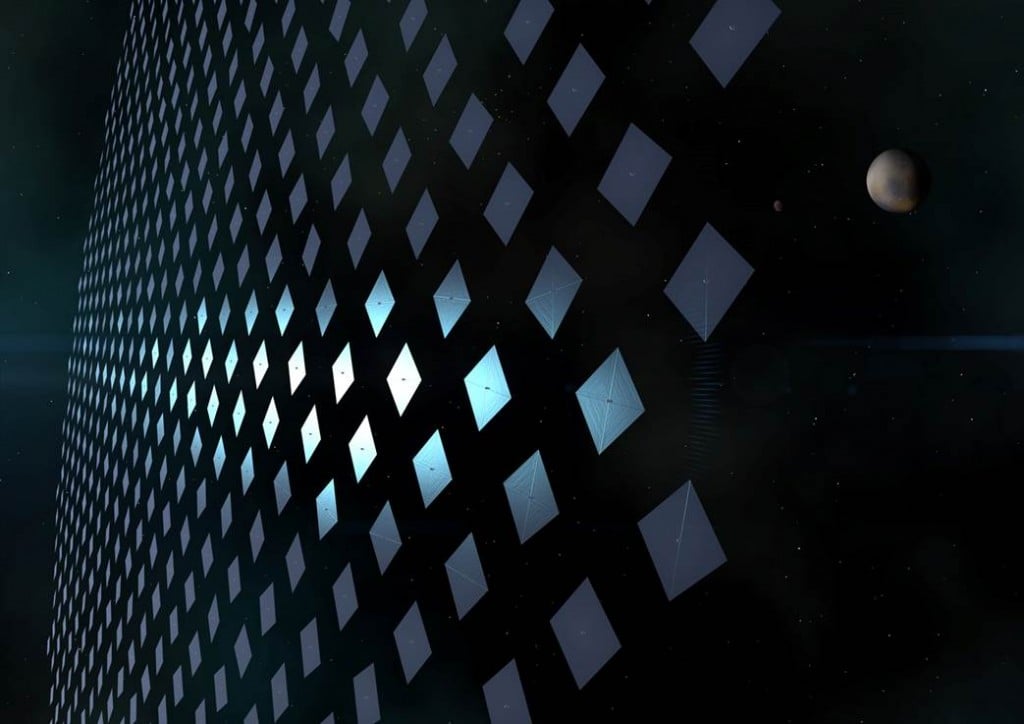At the University of California, Santa Barbara, researchers with the UCSB Experimental Cosmology Group (ECG) are currently working on ways to achieve the dream of interstellar flight. Under the leadership of Professor Philip Lubin, the group has dedicated a considerable amount of effort towards the creation of an interstellar mission consisting of directed-energy light sail and a wafer-scale spacecraft (WSS) " wafercraft ".
If all goes well, this spacecraft will be able to reach relativistic speeds (a portion of the speed of light) and make it to the nearest star system (Proxima Centauri) within our lifetimes. Recently, the ECG achieved a major milestone by successfully testing a prototype version of their wafercraft (aka. the " StarChip "). This consisted of sending the prototype via balloon into the stratosphere to test its functionality and performance.
The launch was conducted in collaboration with the United States Naval Academy in Annapolis on April 12th, 2019. This date was selected to coincide with the 58th anniversary of Russian Cosmonaut Yuri Gagarin 's orbital space flight, making him the first human to go to space. The test consisted of launching the prototype aboard a balloon to an altitude of 32,000 m (105,000 ft) above Pennsylvania.
As Prof. Lubin explained in an interview with UCSB's *The Current*:
The idea behind the StarChip is simple. By taking advantage of advancements in miniaturization, all the necessary components of an exploratory mission could be mounted on a spacecraft the size of a human hand. The sail component builds on the concept of a solar sail and developments made with lightweight materials; and together, they add up to a spacecraft that could be accelerated up to 20% the speed of light.
For the sake of this flight, the science team that created it put the StarChip through a series of tests designed to gauge its performance in space and ability to explore other worlds. Aside from seeing how it faired in Earth's stratosphere (three times higher than the operational ceiling of airplanes), the prototype collected more than 4000 images of the Earth. As Nic Rupert, a development engineer in Lubin's lab, explained:
While the StarChip performed flawlessly on this flight, there are some massive technical hurdles ahead. Considering the distances involved - 4.24 light years (40 trillion km; 25 trillion mi) - and the fact that the spacecraft will need to reach a fraction of the speed of light, the technological requirements are daunting. As Lubin said:
One of the greatest challenges at this point is building an Earth-based laser array that would be capable of accelerated the laser sail. "If you have a large enough laser array, you can actually push the wafers with a laser sail to get to our goal of 20 percent of the speed of light," added Rupert. "Then you'd be at Alpha Centauri in something like 20 years."
Since 2009, the UCSB Experimental Cosmology Group has been researching and developing this concept as part of a NASA Advanced Concepts program called Starlight. Since 2016, they have received considerable support from Breakthrough Initiatives (the non-profit space exploration program created by Yuri Milner) as part of Breakthrough Starshot.
Rather than creating a single spacecraft, the team hopes that their research will lead to the creation of hundreds and even thousands of waferscale craft that could visit exoplanets in nearby star systems. These spacecraft would do away with the need for propellant and would be able to make the journey within a few decades rather than centuries or millennia.
In this respect, these spacecraft would be able to reveal whether or not life exists beyond Earth in our lifetimes. Another interesting aspect of the UCSB project involves sending life from Earth to other exoplanets. Specifically, tardigrades and the nematode c.elegans, two species that have been shown to be highly resistant to radiation, capable of handling the conditions of space, and capable of being cryogenically frozen and revived.
This aspect of their plan is not unlike the proposal made by Dr. Claudius Gros of Goethe University's Institute for Theoretical Physics. Appropriately named " Project Genesis ", the proposal calls for spacecraft propelled by directed energy to travel to other star systems and seed any "transiently habitable" exoplanets that are there. In short, life would be given a jumpstart on planets that are habitable but not inhabited.
As David McCarthy, a graduate student in the Department of Electrical and Computer Engineering at UCSB, explained, getting to the point where all is possible is a very iterative process. "The point of building these things is to know what we want to include in the next version, in the next chip," he said. "You start with off-the-shelf components because you can iterate quickly and inexpensively."
With this high-altitude test complete, the UCSB group is aiming for a suborbital first flight next year. Meanwhile, advances in silicon optics and integrated wafer-scale photonics - thanks in part to research being conducted by UCSB's electrical and computer engineering department - are reducing the cost of mass-producing these tiny spacecraft.
In addition to interstellar travel, this technology could facilitate rapid, low-cost missions to Mars and other locations in the Solar System. Prof. Lubin and his fellow researchers have also spent years exploring applications for planetary defense against comets, mitigating space debris, boosting Earth-orbiting satellites, or remotely powering distant Solar System outposts. When it comes to directed energy, the possibilities really are staggering.
Further Reading: UCSB - The Current*, UCSB ECG*
 Universe Today
Universe Today




